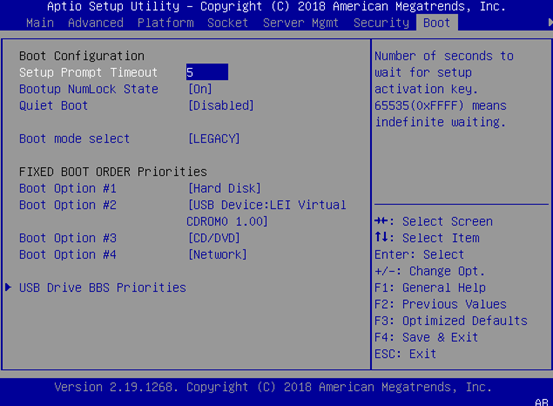BIOS Setup¶
This chapter provides an overview of the BIOS interface and detailed instructions on how to configure system settings, including security, boot options, device management, and hardware monitoring.
Main Page¶
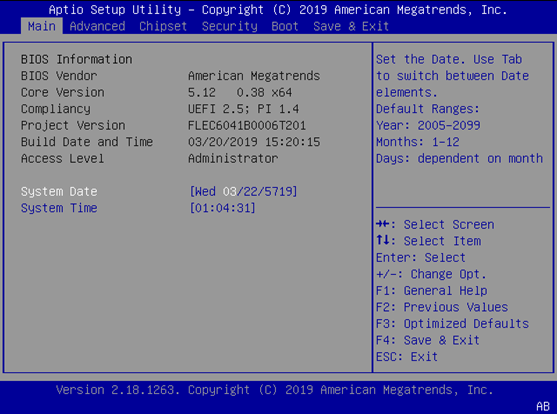
System Information¶
Displays essential BIOS and system data:
BIOS Vendor: American Megatrends
Core Version: AMI Kernel version, CRB code base, X64
Compliancy: UEFI version, PI version
Project Version: BIOS release version
Build Date and Time: MM/DD/YYYY
Access Level: Administrator / User
System Date & Time¶
Configure the system clock:
System Date: Use
to switch between year (2005–2099), month (1–12), and day (1–31 depending on month) System Time: Format [hh:mm:ss]; use
to navigate fields
Advanced Page¶
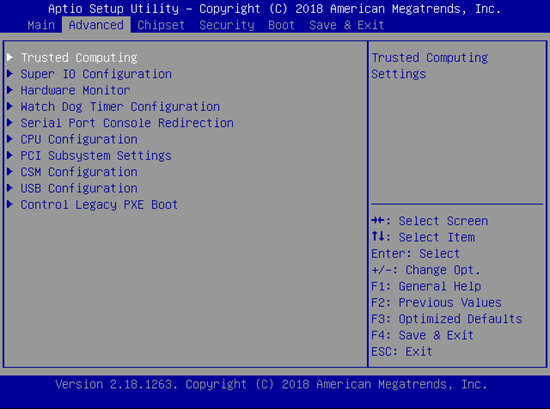
Provides access to deeper system-level configuration. Key areas include:
Trusted Computing
Super IO Configuration
Hardware Monitor
Watchdog Timer
Serial Console Redirection
CPU Configuration
PCI Subsystem Settings
CSM and USB Configuration
Legacy PXE Boot Control
Trusted Computing¶
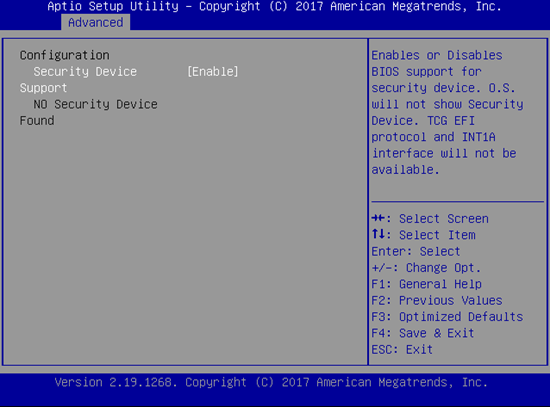
Manage TPM settings, including support, device selection, hierarchy options, and version configurations for TPM 1.2 and TPM 2.0.
Super IO Configuration¶
Set parameters for Serial Ports (COM1/COM2):
Enable/Disable ports
I/O Address and IRQ display
Mode: RS232
Hardware Monitor¶
Displays real-time sensor data:
CPU Temp
System Temp
CPU VCORE
VSB5V, VBAT, 3.3V
Watchdog Timer¶
Enable/Disable system reset functionality for fault tolerance
Serial Console Redirection¶
Configure COM0 for remote access:
Enable/Disable redirection
Terminal type, baud rate, parity, stop bits
VT-UTF8 and resolution options
CPU Configuration¶
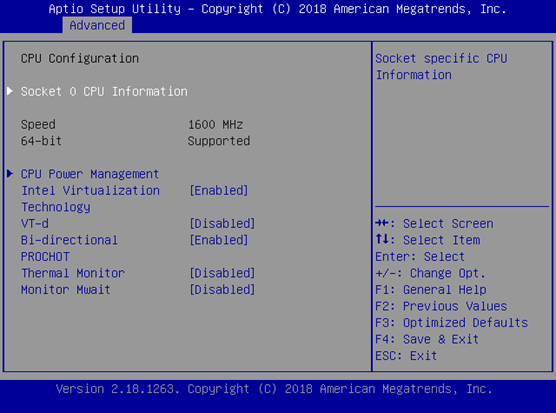
Intel Virtualization Technology, VT-d
PROCHOT and Thermal Monitor controls
Monitor/Mwait toggles
PCI Subsystem Settings¶
Above 4G Decoding: Enables support for 64-bit PCI
Hot-Plug Support: Configure system-wide hot-plug behavior
CSM & USB Configuration¶
CSM Support and individual device boot policies (Network, Storage, Video)
Legacy USB, XHCI hand-off, storage driver timeouts
Control Legacy PXE Boot¶
Configure boot behavior via LAN1 or LAN2 interfaces
Chipset Configuration¶
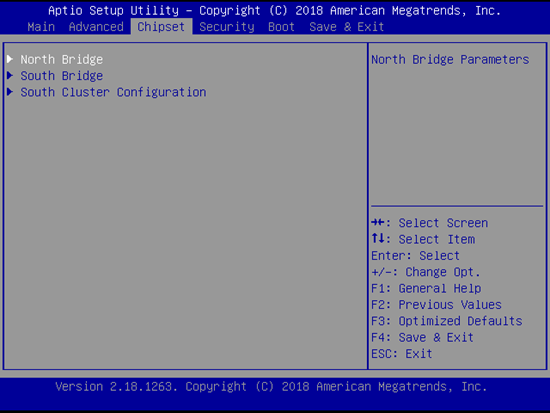
North Bridge¶
Max TOLUD
Above 4GB MMIO BIOS assignment
South Bridge & Cluster¶
OS Selection
Serial IRQ Mode
SATA Drive configuration
USB Configuration (xHCI Mode)
Misc Settings (e.g., Restore on AC Power Loss)
Security Page¶
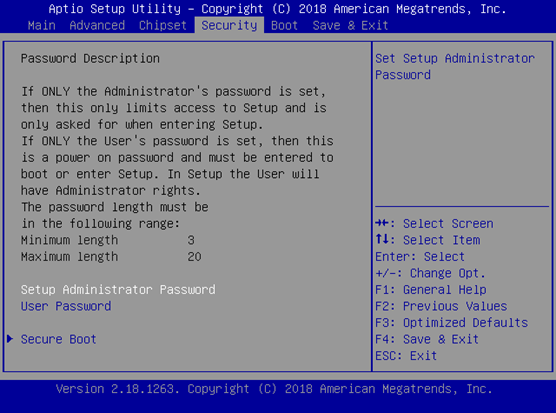
Configure user and administrator access:
Administrator Password
User Password
Secure Boot (Enable/Disable, Mode, Key Management)
Save & Exit¶
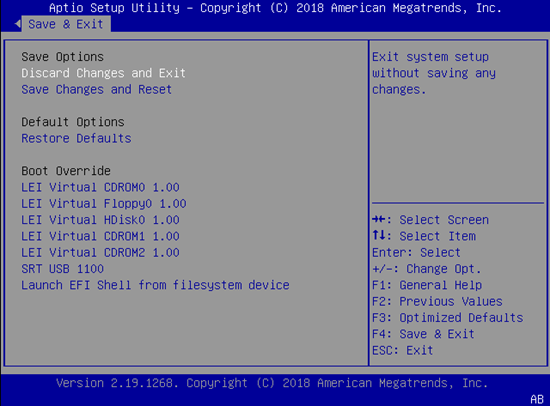
Save Changes and Reset
Discard Changes and Exit
Restore Defaults
BIOS firmware updates and downloads are available here.
